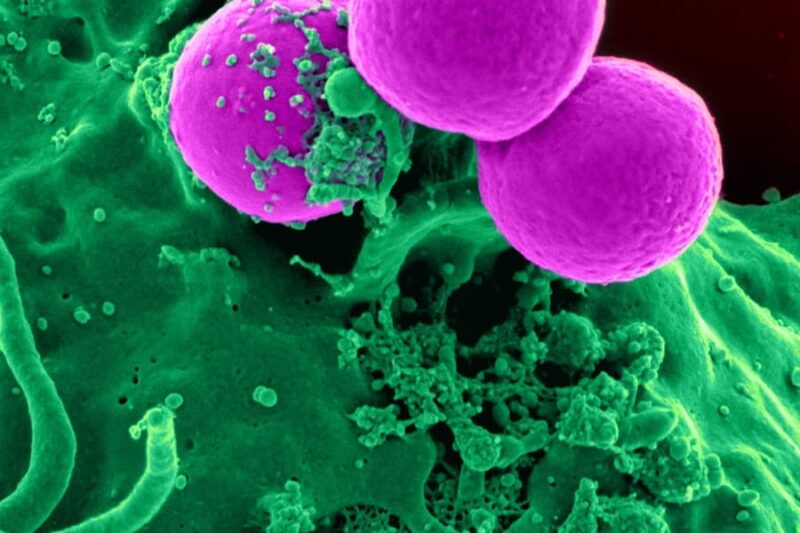A urinary tract infection (UTI) and a yeast infection are two distinct conditions that can cause discomfort and concern. While each infection affects different parts of the body and has unique symptoms, there is a common query that arises: Can you have a UTI and yeast infection simultaneously? This article aims to clarify this misconception and provide a comprehensive understanding of both conditions. By exploring their causes, symptoms, and treatment options, readers will gain valuable insights into differentiating between UTIs and yeast infections, enabling them to seek appropriate medical care when necessary.
Can You Have A Uti And Yeast Infection At The Same Time?
Yes, it is possible to have a UTI and yeast infection at the same time. Although they are distinct conditions caused by different pathogens, it is not uncommon for individuals to experience both infections concurrently. It is important to seek medical attention for an accurate diagnosis and appropriate treatment to address both infections effectively.
Understanding Yeast Infections
Yeast infections, also known as candidiasis, are caused by an overgrowth of a fungus called Candida. Candida is naturally present in the body, particularly in the mouth, digestive tract, and vaginal area. However, certain factors can disrupt the delicate balance of microorganisms, leading to an overgrowth of Candida and the onset of a yeast infection.
Common symptoms of yeast infections vary depending on the affected area. In women, vaginal yeast infections often present with itching, burning, swelling, and abnormal vaginal discharge that is thick and white in color. In oral yeast infections, commonly known as thrush, symptoms include white patches on the tongue, inner cheeks, or the back of the throat.
Several factors can increase the risk of developing a yeast infection. Antibiotic use, which can disrupt the natural balance of bacteria in the body, is a common cause. Additionally, hormonal changes during pregnancy or due to hormonal therapy can make women more susceptible. Individuals with compromised immune systems, such as those with diabetes or HIV, are also at higher risk. Poor personal hygiene, tight or non-breathable clothing, and a diet high in sugar or refined carbohydrates can further contribute to yeast overgrowth.
Different types of yeast infections can occur, affecting various parts of the body. Apart from vaginal and oral yeast infections, other areas susceptible to yeast overgrowth include the skin, nail beds, and even the bloodstream in severe cases. Proper diagnosis and treatment are essential to effectively manage yeast infections and prevent complications.
Different Types Of Yeast Infections
Different types of yeast infections can occur in various parts of the body. Here are some common types:
- Vaginal Yeast Infection: This is the most well-known type of yeast infection. It affects the vagina and is characterized by itching, burning, swelling redness, and abnormal vaginal discharge.
- Oral Thrush: Oral yeast infections, also known as thrush, occur in the mouth and throat. Symptoms include white patches on the tongue, inner cheeks, or back of the throat, along with discom
- Cutaneous Candidiasis: This type of yeast infection affects the skin, usually in warm and moist areas of the body such as the armpits, groin, and under the breasts. It can cause redness, itching, and a rash with satellite lesions.
- Intertrigo: Intertrigo is a yeast infection that occurs in the skin folds, commonly found in the armpits, groin, and beneath the breasts. It causes a red, raw, and irritated rash, often accompanied by itching and discomfort.
- Balanitis: Balanitis is a yeast infection that affects the head of the penis and the foreskin in males. Symptoms include redness, swelling, itching, and a discharge.
- Nail Bed Infections: Candida can also infect the nails, leading to nail bed infections. This can cause changes in the appearance of the nails, including discoloration, thickening, and crumbling.
Overlapping Symptoms And Misdiagnosis
UTIs and yeast infections can share some overlapping symptoms, which can lead to confusion and potential misdiagnosis. It is important to understand these similarities and differences to ensure accurate identification and appropriate treatment.
- Urinary Symptoms: Both UTIs and yeast infections can cause urinary symptoms such as frequent urination, urgency, and a burning sensation during urination. These shared symptoms can make it challenging to distinguish between the two conditions based solely on urinary discomfort.
- Vaginal Discharge: While yeast infections typically result in a thick, white, and cottage cheese-like discharge, some UTIs may also cause vaginal discharge. In UTIs, the discharge is usually cloudy or bloody, indicating an infection in the urinary tract.
- Pelvic Pain: Pelvic pain can occur in both UTIs and yeast infections. However, the nature and location of the pain can differ. UTIs often cause lower abdominal or pelvic pain, while yeast infections may cause more localized discomfort, often accompanied by itching.
- Misdiagnosis: Due to these overlapping symptoms, misdiagnosis can occur. Some individuals may mistake the symptoms of a UTI for a yeast infection or vice versa, leading to inappropriate self-treatment or delayed medical intervention. It is essential to seek professional medical advice for an accurate diagnosis to avoid complications and ensure effective treatment.
When To See A Doctor?
Knowing when to seek medical attention is crucial when dealing with UTIs and yeast infections. Here are some indicators that it is time to consult a healthcare professional:
- Persistence of Symptoms: If your symptoms persist or worsen despite home remedies or over-the-counter treatments, it is advisable to see a doctor. This is particularly important if symptoms last longer than a few days or if new symptoms develop.
- Recurring Infections: If you experience recurrent UTIs or yeast infections, meaning you have multiple infections within a short period, medical evaluation is essential. It could indicate an underlying issue that requires further investigation and targeted treatment.
- Severe Symptoms: If you experience severe symptoms such as intense pain, high fever, blood in the urine or vaginal discharge, or difficulty urinating or swallowing, it is important to seek immediate medical attention. These symptoms may indicate a more serious infection or complications that need prompt evaluation and treatment.
- First-Time Infection: If it is your first UTI or yeast infection, it is advisable to consult a healthcare professional for an accurate diagnosis. They can confirm the infection, rule out other potential causes, and guide you on the appropriate treatment options.
- Suspected Pregnancy or Children: If you suspect a UTI or yeast infection in pregnancy or if your child displays symptoms, it is crucial to consult a doctor. In these cases, specialized care is needed to ensure the safety of both the mother and the baby or appropriate management for children.
- Underlying Health Conditions: If you have underlying health conditions such as diabetes, a compromised immune system, or recurrent urinary tract issues, it is important to involve a healthcare professional. They can assess the situation holistically, considering your overall health, and provide appropriate treatment plans.
Prevention Strategies
Preventing UTIs and yeast infections is key to maintaining good urogenital health. Here are some effective strategies to reduce the risk of developing these infections:
UTI Prevention:
- Stay hydrated: Drink plenty of water to help flush out bacteria from the urinary tract.
- Urinate after intercourse: Emptying your bladder after sexual activity can help flush out any bacteria that may have entered the urethra.
- Wipe from front to back: After using the toilet, always wipe from front to back to prevent the spread of bacteria from the anal area to the urethra.
- Practice good hygiene: Keep the genital area clean and dry, and avoid using harsh soaps or douches that can disrupt the natural balance of bacteria.
Yeast Infection Prevention:
- Avoid irritants: Steer clear of douches, scented feminine products, and harsh soaps, as they can disrupt the vaginal pH balance and promote yeast overgrowth.
- Wear breathable clothing: Opt for breathable cotton underwear and avoid tight-fitting pants or synthetic fabrics that can trap moisture and heat, creating an ideal environment for yeast to thrive.
- Practice good hygiene: Keep the vaginal area clean and dry, but avoid excessive washing or using strong cleansers that can disrupt the natural vaginal flora.
- Limit sugar intake: Yeast feeds on sugar, so reducing your consumption of sugary foods and drinks can help prevent yeast overgrowth.
Conclusion
Differentiating between UTIs and yeast infections is important as they are distinct conditions that require specific treatments. While it is possible to have both infections simultaneously, seeking medical advice for an accurate diagnosis is crucial. By understanding the symptoms, causes, and prevention strategies for UTIs and yeast infections, individuals can take proactive steps to maintain urogenital health. Remember, timely medical intervention, practicing preventive measures, and prioritizing overall well-being is key to effectively managing and preventing these infections.
FAQ’s
- Can I Have A Uti And A Yeast Infection At The Same Time?
Yes, it is possible to have both infections simultaneously. Although they affect different areas of the body and have distinct causes, it is not uncommon for individuals to experience both infections concurrently.
What Are The Common Symptoms Of A Uti?
Common symptoms of a UTI include pain or a burning sensation during urination, frequent urination, an urgent need to urinate, cloudy or bloody urine, and pelvic pain. However, it’s important to note that symptoms can vary from person to person.
What Are The Common Symptoms Of A Yeast Infection?
Common symptoms of a yeast infection include itching, burning, and swelling in the affected area (vagina, mouth, skin, etc.), abnormal discharge (thick, white, cottage cheese-like for vaginal yeast infections), and discomfort during sexual intercourse or swallowing (in the case of oral thrush).
Can Utis And Yeast’s Infections Be Sexually Transmitted?
While sexual activity does not directly cause yeast infections, it can contribute to UTIs, particularly in women, due to the proximity of the urethra to the anus. UTIs can be caused by bacteria entering the urethra during sexual intercourse.
How Can I Prevent Utis And Yeast Infections?
To prevent UTIs, it’s important to maintain good hygiene, stay hydrated, urinate after sexual activity, and wipe from front to back. To prevent yeast infections, avoid irritants, wear breathable clothing, practice good hygiene, limit sugar intake, and maintain a healthy immune system. Regular check-ups and safe sex practices are also recommended.










